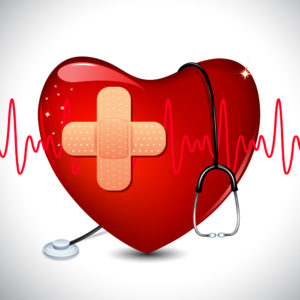It’s more than 50 years since Dr. Rene Favaloro performed the first American coronary bypass surgery at the Cleveland Clinic. Our understanding of cardiovascular disease has progressed steadily since the Framingham Heart Study got underway in 1948. Artificial heart valves, vascular stents, pacemakers and catheters have been saving lives for decades. And the genius of invention to address cardiovascular disease has pushed doggedly forward.
Yet, heart disease still kills more Americans than anything else. Despite solid proof dating back to 1967 that physical activity cuts the risk of heart disease, 80 percent of the U.S. population doesn’t get enough exercise. More recent studies even suggest a link between prolonged sitting and sedentary lifestyles and an increased risk for cardiovascular disease.
It’s a conundrum: On one hand, innovation has propelled us enormously in the struggle to overcome diseases of the heart and cardiovascular system. On the other hand, we’ve “I.T.’ed” ourselves into largely motionless recesses, where much of our daily routines require the movement of our eyes, mouths and hands, leaving the rest of our bodies in a chronically sedentary state.
The human body is designed to move. The more we learn about human health, the more we realize the central role of physical activity in keeping us well.
So here we are in 2019: Equipped with the knowledge, but wedged into lifestyles that defy it.
Unless we do something collectively to overturn the status quo of inactivity, the only fallback we’ll have to overcome the pull of modern-day lifestyles is our own individual will power. Absent of the right public policies and social and societal supports, individual will power tends to be a very limited resource.
Coming together is the answer. And meaningful change in the fight for a healthier America must come from every level, every sector, and each one of us.
Fortunately, there are many unsung leaders across America already making a difference in the space they inhabit and influence.
In 2016, when the small town of Bethel, Maine, and surrounding communities faced a changing economic base, they turned to the Orton Family Foundation and its proven Community Heart & Soul development model for inclusive, resident-driven planning. Guided by the Vermont-based nonprofit, residents in the Bethel area set to work talking directly with community members, gathering their stories and viewpoints. Preserving the area’s natural beauty and ensuring an active outdoor environment were among the common priorities that emerged.
Now, as the project begins to sketch out a roadmap for the future, prioritizing opportunities for physical activity is part of the conversation. One idea would set aside nearly 1,000 acres of former logging land adjacent to 2,500 acres owned by the town. The Bethel Community Forest project would expand opportunities for outdoor recreation, including hiking and biking, and enhance existing amenities that include a walking path, bicycling loops and a skate park.
How America uses its physical environments to advance health isn’t the only thing that requires innovation. Matthew Miller saw a void in how depression and anxiety are addressed. Exercise was missing — despite convincing evidence that physical activity helps with both. (Research also shows depression as a risk factor for heart disease, and they often co-occur.)
So, in 2015, in his own enclave of Passaic County, New Jersey, Miller and his co-founders started The Anxiety & Depression Initiative, Inc. (ADI). The ADI organizes events, bringing people together to exercise, benefit from social support, and enjoy nature. Recently, the ADI kicked off an activity tracker recycling program, working with mental health organizations to provide people in the area with mental health disorders an additional tool for staying physically active.
At 26, Samira Howard started Fitness is Fundamental, a community outreach mission dedicated to inspiring girls and women to be active. She grew up playing competitive sports and knew the benefits of exercise: “It taught me to overcome obstacles and built my confidence,” Howard says. “When I realized that many women in my own community, women of color my age and older, never learned to prioritize their well-being in that way — some not even owning a pair of workout shoes — I wanted to do something about it.”
Using her background in Kinesiology, Howard developed educational programming on fitness, nutrition and positive body image practices and started running workshops. “It’s about taking care of each other,” she says. “Reaching girls while they’re young is so important in preparing them for active, healthy, empowered lives.”
During another February — 55 years ago — we looked ahead to all the advances we hoped to make in the battle against cardiovascular disease with the very first American Heart Month. We’ve come far. We still have far to go. But much of the progress we still need to make doesn’t depend on the science, the medicine, or the technology. It rides on how we choose to live.
So, this year, let’s join together. Let’s finally create a national culture that supports all Americans in their efforts to live physically active, heart-healthy lives.

